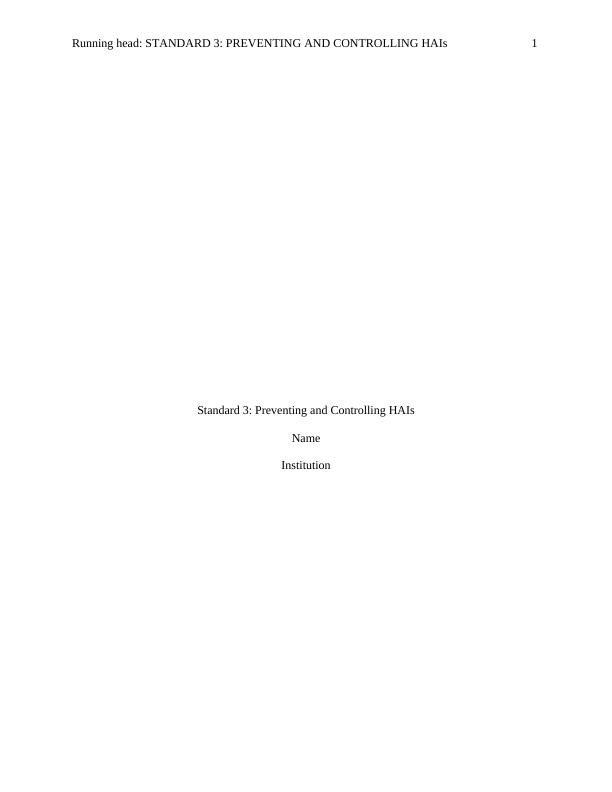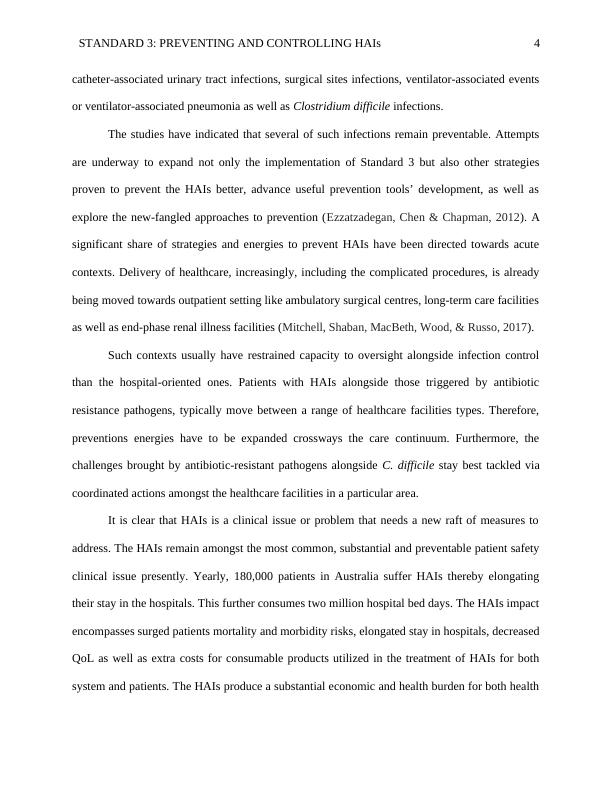Standard 3: Preventing and Controlling HAIs
Students are required to conduct a literature review on an issue related to one of the Health Service Standards, and reflect on its implications for clinical practice, research, or the profession.
12 Pages3373 Words233 Views
Added on 2023-06-15
About This Document
Standard 3 is crucial in addressing Healthcare-Associated Infections (HAIs) which are the most common complication that affects patients in different healthcare facilities. This article discusses the importance of Standard 3 in preventing and controlling HAIs, the financial benefits of employing prevention and control practices, and the need for a collaborative approach to ensure successful infection control and prevention.
Standard 3: Preventing and Controlling HAIs
Students are required to conduct a literature review on an issue related to one of the Health Service Standards, and reflect on its implications for clinical practice, research, or the profession.
Added on 2023-06-15
ShareRelated Documents
End of preview
Want to access all the pages? Upload your documents or become a member.
Reducing Healthcare-Associated Infections: Evidence-Based Practice
|19
|3897
|407
Healthcare Associated Infections in Evidence-based nursing practices
|10
|2275
|67
Nursing Intervention Assignment 2022
|9
|2319
|12
Secure Individuals.
|3
|367
|58
Controlling Transmission of Healthcare Acquired MRSA
|8
|3492
|100
Effectiveness of Interventions to Prevent MRSA Infection in Hospital Settings
|9
|2602
|38




